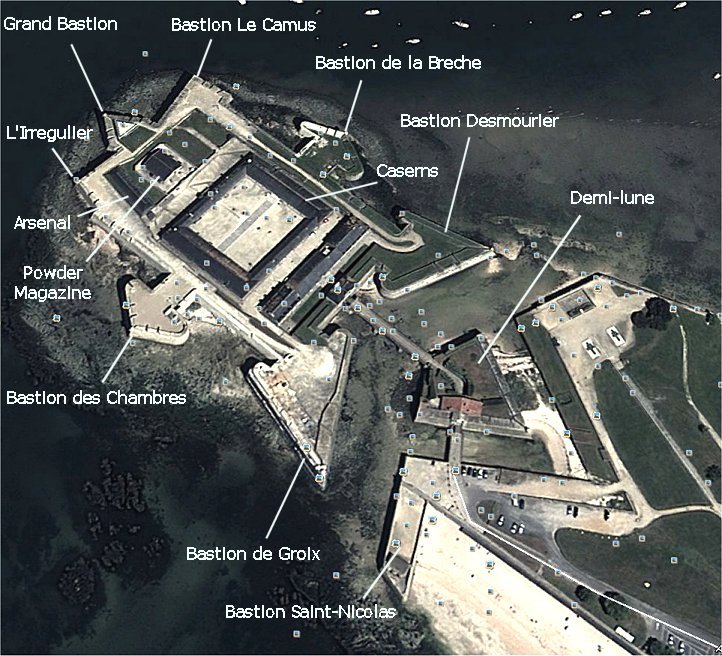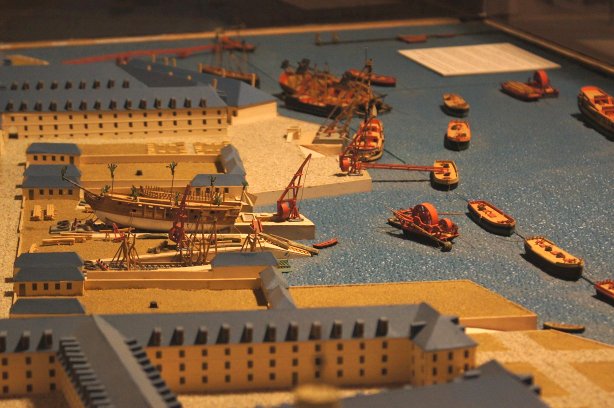
The ditch can be wet or dry depending on the tides. Let's cross the bridge into the demi-lune.

We've passed through the demi-lune, which you can see on either side of
this 360 degree panorama. Ahead you can see that the bastions are
large, making the curtain between them relatively short.
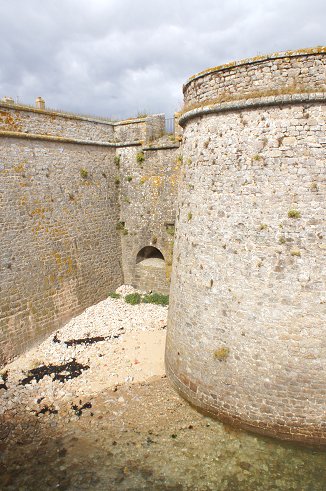
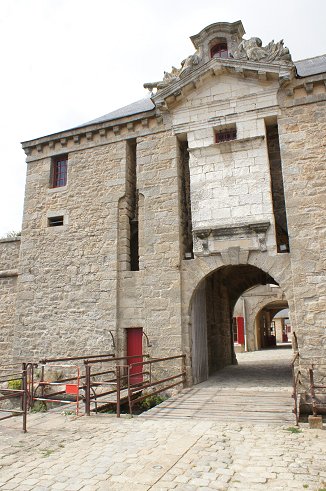

The bastions feature curved orillons rather than sharp angles.
These protect recessed flanks that cover the gate.
Drawbridges existed for both vehicles and pedestrians. Some
ornamentation survives.

From the Bastion de Groix you can see the Demi-lune that we passed
through. To its right you can see a defensive wall extending
along the coast protecting the town of Blavet. Projecting into
the water is the Bastion Saint-Nicolas, modified at its tip by the
Nazis as part of their Atlantic Wall.

This is a 360 degree view from just outside the Bastion Dumourier's sentry post.

The center of the citadel is a square surrounded by barracks - now
excellent museums, including a great one on the East India Company.
The gate is beyond the tourists on the left. We'll go
beyond the tourists on the right to see the other end of the fort.

We walked through the opening just to the right of the powder magazine.
It dates to Vauban's time and is reinforced by buttresses
and is surrounded by a wall. To the right of it is the
arsenal. The walls on the far left and far right overlook the
entrance to the harbor.
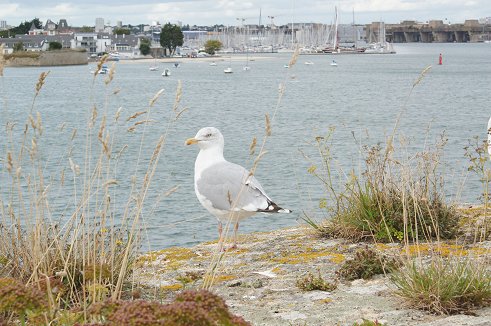
The fort clearly dominates the entrance to the harbor. In the
right background you can see U-Boat pens made by the Nazis, buildings
that are impressive in their own right - but as ugly as the cause
that built them.

Low tide, down below.

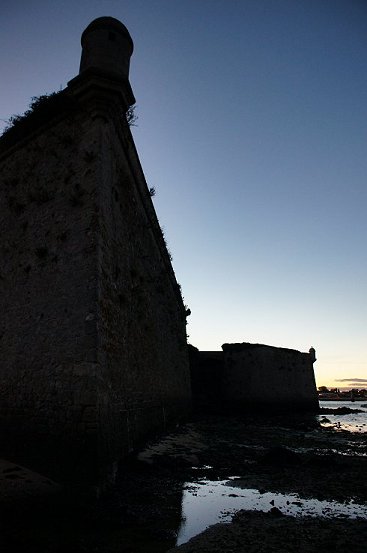
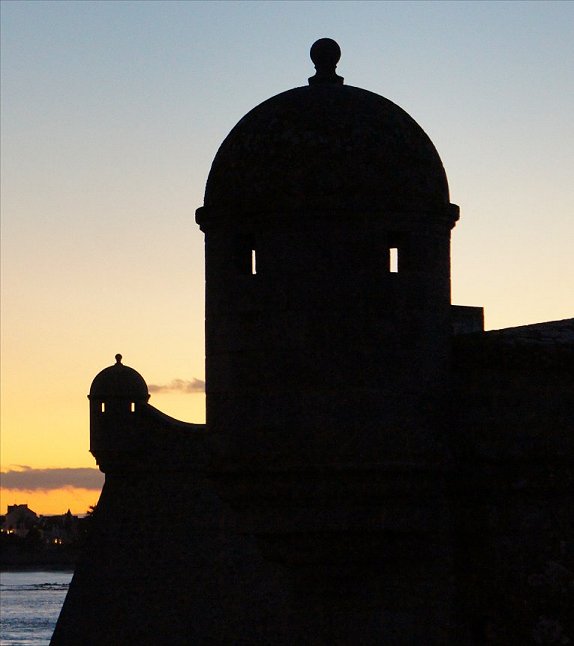
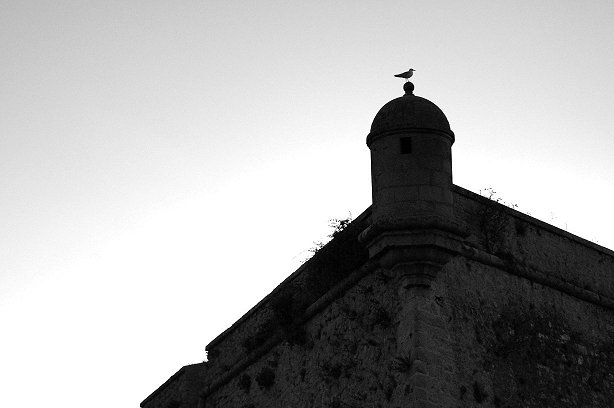
The citadel is quite scenic, especially at twilight.

This is the town side of defenses facing the Atlantic. At left is a Nazi addition.

This is the land-facing portion of the town's defenses.
Copyright 2015 by John Hamill
